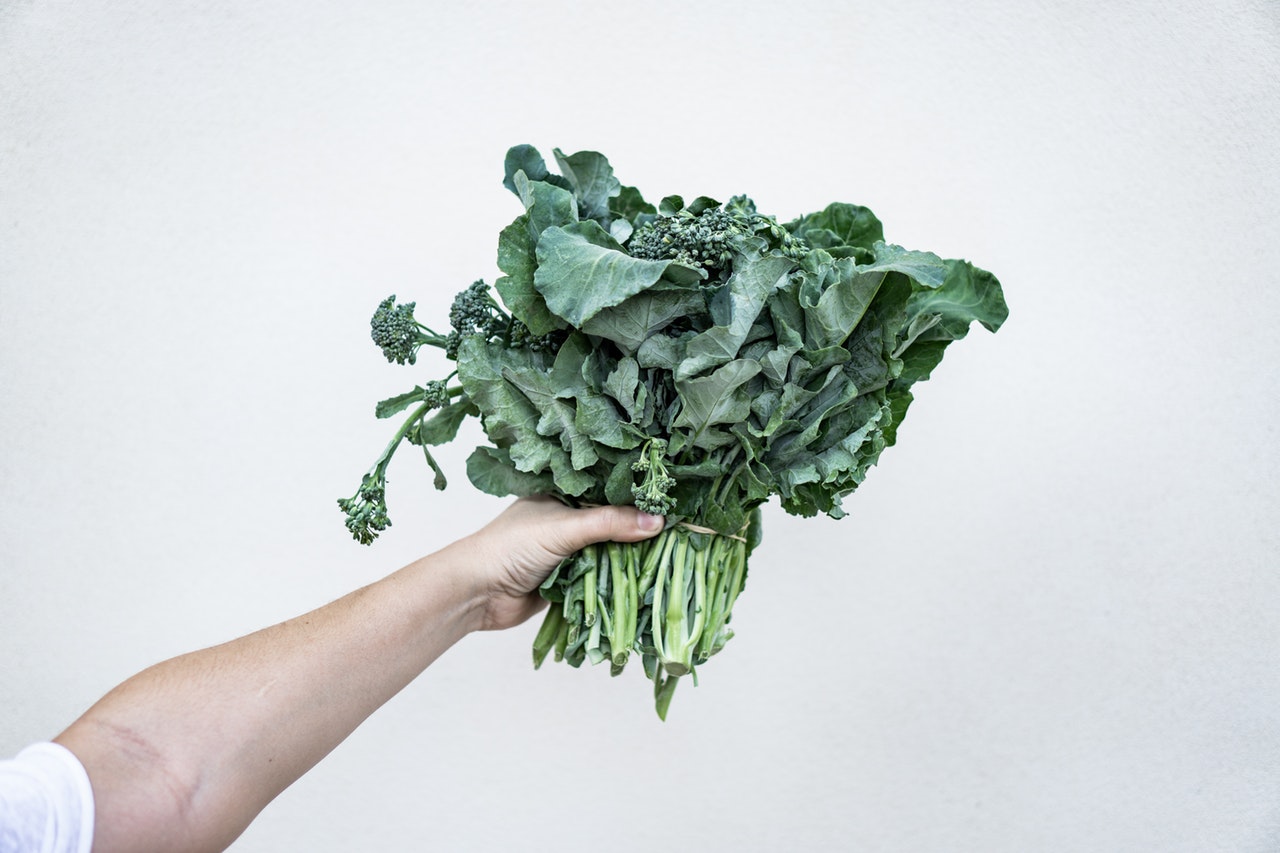- Great Salt Lake Acupuncture133 S. State St. #1
Clearfield, UT 84015(801) 773-4944 Monday - Thursday 11am - 7pm
-
Latest Articles:
- • Add These 10 Immune-Boosting Foods to Your Fall Diet •
- • Keep Your Skin Healthy and Glowing with these Fall Skincare Tips •
- • Beat End of Year Burnout with these Fall Self-Care Rituals •
Health WellNews
In Summer, Nourish Your Heart
Summer is a time of abundant energy, long sunshine-filled days, and warmth. In Traditional Chinese Medicine (TCM), summer has many different associations that help define it and therefore help us understand how to stay in balance with the season. To shed some light on the context of summer, its element is fire, the color is red, its emotion is joy and the governing organs are the heart and the small intestine. One way you can stay healthy this Summer is to adjust your habits in order to support your heart.

The heart is the main organ associated with the season of summer, and as such, it should be paid close attention to and nourished to remain healthy. The heart’s main function is to circulate oxygen-rich blood throughout the body. In TCM, mental activity is also associated with the heart. This mental activity is known as Shen in Chinese medicine. Often compared to our mind, the Shen goes deeper to include our thought processes, memory, consciousness, and emotional well-being.
Summer is the most appropriate time to calm the Shen and provide
it with enrichment that will last throughout the whole year.
When the fire element is balanced, the mind is calm, sleep is sound and the heart organ is strong and healthy. If the fire element is not balanced, there may be depression or an excess of joy which manifests as mania. Symptoms of an unbalanced fire element include heartburn, insomnia, agitation, nervousness, digestive upset, rashes, palpitations, and excessive perspiration.
The small intestine, the second organ associated with summer in TCM, is responsible for separating the pure from the impure, allowing the body to use the pure and dispose of the impure. When the heart is not balanced, the small intestine, the brother to the heart, will not function properly either. For many people, this manifests as digestive upset of some sort: vomiting, nausea, diarrhea, etc.
Going outside and engaging all of your senses is an easy way to nourish the heart. A technique known as “grounding” has been gaining popularity over the past decade, and science is showing that it can be very beneficial. All one has to do is walk or stand in the grass while barefoot. The energy from the earth is incredible, and it can be very healing. While you’re there, take time to listen to the sounds of nature that surround you and enjoy the fragrances of the flowers. Taking in the experience with all your senses can be very grounding and have a calming effect on the mind and body.
Probably the two most important things you can do for heart health during the summer months is drink plenty of fresh water and eat cooling foods. No matter what season of the year, water is vital. It is recommended we drink at least 64 ounces per day. Cooling foods like fruits are good at keeping fire under control, which is healthy for the whole body. Other foods that are beneficial for the summer months include peppers, eggplant, cabbage, kale, broccoli, spinach, melons of all kinds, beets, radishes, jicama, carrots, berries, pineapple, cucumbers, peaches, peppermint, grapefruit, and mushrooms.
Healthy Eating for Spring
According to Traditional Chinese Medicine theory, spring is the season of the liver and the gallbladder. These organs regulate a smooth flow of energy throughout the whole body. However, they are prone to stagnation if we do not take proper care of ourselves. This can manifest as anger, irritability, depression, insomnia and even pain. Stagnation can occur when people live an unhealthy lifestyle and make poor dietary decisions.

Spring is a time of renewal, regeneration, growth and energy. Plants and animals awaken from their slumber, and vital nutrients stored in the roots of plants during the cold winter months come to the surface as life becomes more vibrant and fluid.
Human beings are no different. Humans stay indoors more during the winter months, and tend to pack on a little extra weight in the process. As the weather warms, humans become more gregarious and spend more time outside enjoying nature. This is just a natural process.
Therefore, it makes sense that what was observed by the ancient Chinese should still hold true today. Humans are supposed to take their cues from nature. As a species, humans should be more active during the warmer spring months. And to do this, we need proper nourishment. Qi (pronounced “chee”) can be interpreted as the “life energy” or “life force,” that flows within us. This Qi is the vital substance that keeps our bodies functioning until the day we die. To keep the Qi plentiful, we need to eat the proper foods at the proper times.
During the spring, we should be eating foods that have upward moving energies, such as green, sprouting vegetables. But we also need food that will provide the extra nourishment for the increased amount of activity that accompany the season of spring. This is where bitter foods play a vital role. Bitter foods are known to clear heat, dry dampness and stimulate appetite. Consider adding foods such as kale, collards, celery or arugula to provide yourself some much needed springtime energy.
Foods that have a slightly bitter taste, such as asparagus, quinoa, romaine lettuce and dandelion tea, are also known to effectively ward off heat in the liver. Food rich in chlorophyll help ward off stagnation and enhance the free flow of Qi, these include wheat grass, spirulina, chlorella, parsley, kale, Swiss chard and collard greens. Notice, all of these are abundant during the months of spring. Finally we suggest adding a glass of warm water with a slice of lemon first thing in the morning. This routine will help detoxify the liver and gallbladder to start the day off fresh.
Six Reasons to Try Acupuncture this Year
Do you ever feel that you’re on a roller coaster ride that never ends? Do you have aches and pains almost daily? How many nights a week do you stare at the clock waiting for sleep to arrive? Are medications ruling your life? When was the last time you actually felt at peace? If any of these questions resonate with you, it might be time to look to Traditional Chinese Medicine for answers. Acupuncture is one modality of Traditional Chinese Medicine, and people throughout Asia have known the magnificence of acupuncture for thousands of years. Over the last several years, Traditional Chinese Medicine has been growing in popularity worldwide.
Here are six reasons why you might want to consider using it too.
MANAGE YOUR PAIN
Pain is the number one reason why people turn to acupuncture, and for good reason. If you’ve tried everything else and have found little to no relief, acupuncture may be right for you. But remember, chronic pain took time to develop and it will also take time for acupuncture treatments to work. Many people get some relief immediately, but acupuncture works on a cumulative basis, so commitment to the process and adhering to your suggested treatment regime, is a must.

GET SOME REST
Acupuncture can address imbalances in your body that may contribute to your inability to get a good night’s sleep. It’s been shown that acupuncture can actually encourage the brain to produce the chemicals that help you relax and sleep better. If you have difficulty falling asleep, wake up frequently or you toss and turn a lot, acupuncture might just be the missing link. In fact, many people report falling asleep while receiving acupuncture treatments and say they sleep like babies after their treatments.
ALLEVIATE YOUR ALLERGIES
Seasonal or otherwise, allergies can be debilitating. Multiple studies have shown allergy symptoms can be decreased and sometimes even eliminated with the use of regular acupuncture treatments. Acupuncture can dramatically lessen allergic reactions, and in some cases help overcome what caused the symptoms in the first place. This safe and effective medicine can help most people reduce or eliminate dependence on allergy medication.
MANAGE YOUR MENSTRUATION
Many women suffer monthly from menstruation problems. It can be that her period is irregular, painful or so heavy that it leads to anemia and fatigue. There can also be mental health issues associated with periods, such as depression, anger and irritability. Most over-the-counter medications simply mask symptoms. But to treat the root of the problem, give acupuncture a try. Acupuncture works to balance your body’s systems to regulate menstrual problems and alleviate nagging symptoms that plague women monthly.
ADDRESS YOUR ANXIETY, STRESS, OR DEPRESSION
Thousands of people in the U.S. suffer from stress, depression and anxiety. While there are many amazing therapists available to talk to, talk therapy may not be enough. Another common route is the use of prescription medications. But those are accompanied with unwanted side effects. This is where acupuncture and Chinese herbal formulas can help. Acupuncture can actually start to relieve symptoms of depression, stress and anxiety in a few treatments without harsh side effects, and is drug-free and safe. With mental health issues looming as a larger problem, it makes sense to try a natural alternative first.
TRY PREVENTIVE MEDICINE
Did you know that acupuncture’s main function is to help keep you healthy? Acupuncture is not always known as a method of preventive care, but it should be.
Waiting until there is an injury or illness will only cause the treatments to take longer to be effective. Using acupuncture preemptively will help you fight off illness and let you recover more quickly.
These 6 reasons are enough to give acupuncture a try. It is 100% safe, natural, drug-free and effective.
GIVE US A CALL TODAY!
Does Your Liver Need a Spring Tune-Up?
In Traditional Chinese Medicine, each season is ruled by a particular organ system and spring is connected to the liver. What does this mean? Well, you probably notice changes in the way you feel, both physically and mentally, as the seasons change. I know I tend to feel a bit more contemplative and introspective during the winter months. Once spring hits, I’m ready to recharge and get things done. The liver energy is strong and assertive, the type of energy you need to create plans and then propel them into motion. However, if your liver is a little out of balance, you might notice you are more irritable or on edge than usual. Here are a few signs that your liver is in need of an acupuncture tune-up:
1) You’ve noticed an increase in headaches lately, and these headaches seem to feel worse when you aren’t active. Generally, these headaches tend to manifest at the vertex of your head.
2) You might begin to feel constipated or bloated. Your bowel movements might become irregular, alternating between constipation and loose stools. Hard, difficult stools that appear pebbly are also a sign of liver imbalance.

3) Your friends or coworkers are scared of you because you are cranky, cranky, cranky. When liver energy is out of balance, you might feel agitated, irritated and generally out of sorts. Sometimes the irritation can expand into outright anger more easily than it would if this energy was flowing smoothly.
4) Ladies, you may notice your PMS symptoms have been worse lately. Bloating, breast tenderness, sensitivity…you can blame all of the above on your liver. If your periods are more painful or clotted, this is also due to a stagnation of liver energy.
5) Your eyes are red, itchy or irritated.
6) Your shoulders, neck or jaw are uncomfortably tight. If the liver energy is out of balance, it can flow upward. This causes everything in your body to rise up: you might grind or clench your teeth, your shoulders will levitate up around your ears, and you might experience symptoms of TMJ.
7) Your allergies are in full force. Common symptoms among allergic rhinitis include runny nose, sneezing, watery eyes, swelling around the eyes, persistent cough, sinus headaches, earaches and more.
Acupuncture for Treating Depression
Depression has a tendency to rear its head when we feel overwhelmed or out of balance. Hopefully, we can pull ourselves out of the depressed state and continue on with everyday life. But, that is not always the case. Clinical depression affects upwards of 16 million adults in the United States. Typically, doctors prescribe antidepressants, but alternative methods, like acupuncture, work just as effectively as antidepressants without any negative side effects.

Whereas antidepressants address the symptoms of depression and ignore the root causes, acupuncture and Traditional Chinese Medicine can help alleviate symptoms of depression while also attacking the root cause(s). In this way, TCM brings the body and mind back into balance. Rather than ignoring the connection between the body and mind, acupuncturists approach treatment from a holistic standpoint. When we experience emotional challenges and upset, our physical body may become affected as well. Then a vicious cycle begins, because the emotions are greatly impacted by what we can and cannot do physically.
Long term imbalances in both our physical bodies and our minds can lead to a state of depression. This depression affects our qi (pronounced “chee”), or vital energy. Qi animates the body while guarding it from pain and illness. When Qi is blocked and unable to flow properly throughout the body and mind, stagnation is created which can lead to depression. Acupuncture helps to unblock these areas of stagnation, allowing qi to flow freely again. When the qi flows freely, physical pain and mental anguish will dissipate over time and the depression will lift.
For those who suffer with severe depression, acupuncture may not be enough. This is where other elements of TCM come into play. Things such as herbal formulas can be excellent additives for helping people cope with depression. There are several Chinese herbal formulas that work very well. One of the most commonly used formulas is Chai Hu Shu Gan San. This formula contains things like white peony root, tangerine peels and bitter orange that help boost or tonify the qi. Many times, natural remedies are a better choice for those suffering from depression, as there are far fewer side effects than found in prescription pharmaceuticals.
Techniques like tai chi or qi gong are other ways to help battle depression naturally. Tai chi and qi gong bring the body and mind back into balance by decreasing stress and allowing the person performing it to focus all of their intentions on the movements. This allows the mind to relax, which in turn relaxes the body. Tai chi and qi gong also increase oxygen flow into the muscles, allowing for increased mobility.
If you are somebody who suffers from depression and you are looking for natural, holistic solutions, TCM may be the right choice for you.

